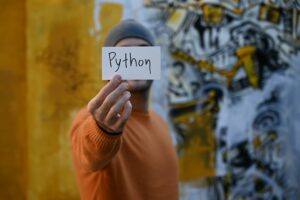Master Neural Structured Learning with TensorFlow: A Comprehensive Guide

Enhance your understanding of structured learning with TensorFlow’s Neural Structured Learning framework. Discover how integrating structured signals and input features can revolutionize your neural network training.
Introduction
In the rapidly evolving field of machine learning, structured learning emerges as a pivotal approach to enhance neural network performance. By incorporating structured signals, such as graphs and adversarial perturbations, into the training process, models can achieve higher accuracy and robustness. TensorFlow’s Neural Structured Learning (NSL) framework offers a comprehensive toolkit for integrating these structured learning techniques seamlessly into your machine learning projects.
What is Neural Structured Learning?
Neural Structured Learning (NSL) is an innovative paradigm designed to train neural networks by leveraging additional structural information alongside traditional feature inputs. This framework allows for the integration of both explicit structures, like graphs that represent relationships or similarities among samples, and implicit structures, such as those introduced through adversarial perturbations.
Explicit vs. Implicit Structures
-
Explicit Structure: Utilizes predefined relationships, often represented as graphs, to inform the learning process. For example, in a social network, connections between users can provide insights that improve model predictions.
-
Implicit Structure: Involves inducing structure through adversarial perturbations. These are intentional modifications to input data designed to test and enhance the model’s robustness against malicious attacks aimed at misleading predictions.
Benefits of Structured Learning in TensorFlow
Incorporating structured learning into your TensorFlow models offers several advantages:
-
Improved Model Accuracy: By utilizing both labeled and unlabeled data through structured signals, models can achieve higher accuracy, especially when labeled data is scarce.
-
Enhanced Robustness: Training with adversarial perturbations makes models more resilient to malicious attacks, ensuring reliable performance in real-world applications.
-
Flexible Integration: The NSL framework integrates seamlessly with TensorFlow’s existing APIs, allowing developers to incorporate structured learning without overhauling their current workflows.
Getting Started with NSL in TensorFlow
Embarking on structured learning with TensorFlow is straightforward thanks to the well-designed APIs and comprehensive tools provided by the NSL framework.
Installation Guide
Begin by installing the Neural Structured Learning package:
pip install neural-structured-learning
Overview of TensorFlow NSL APIs
TensorFlow NSL offers a range of APIs tailored for different levels of integration:
-
Keras APIs: Simplify the process of training models with either explicit graphs or adversarial perturbations.
-
TF Operations and Functions: Provide low-level access for more customized training scenarios.
-
Tools for Building Graphs: Assist in constructing and managing graph inputs essential for structured learning.
Practical Example: Training with Adversarial Regularization
To illustrate the application of NSL, let’s walk through a basic example using the MNIST dataset:
import tensorflow as tf
import neural_structured_learning as nsl
# Load and preprocess data
(x_train, y_train), (x_test, y_test) = tf.keras.datasets.mnist.load_data()
x_train, x_test = x_train / 255.0, x_test / 255.0
# Define the base model
model = tf.keras.Sequential([
tf.keras.Input(shape=(28, 28), name='feature'),
tf.keras.layers.Flatten(),
tf.keras.layers.Dense(128, activation=tf.nn.relu),
tf.keras.layers.Dense(10, activation=tf.nn.softmax)
])
# Configure adversarial regularization
adv_config = nsl.configs.make_adv_reg_config(
multiplier=0.2,
adv_step_size=0.05
)
adv_model = nsl.keras.AdversarialRegularization(model, adv_config=adv_config)
# Compile and train the model
adv_model.compile(
optimizer='adam',
loss='sparse_categorical_crossentropy',
metrics=['accuracy']
)
adv_model.fit(
{'feature': x_train, 'label': y_train},
batch_size=32,
epochs=5
)
# Evaluate the model
adv_model.evaluate({'feature': x_test, 'label': y_test})
This example demonstrates how to enhance a basic neural network with adversarial regularization using NSL, leading to a more robust and accurate model.
Advanced Topics in Neural Structured Learning
Neural Graph Learning
Beyond adversarial regularization, NSL supports Neural Graph Learning, which leverages graph-based structures to capture relationships between data points. This is particularly useful in scenarios where relational information can significantly boost model performance.
Adversarial Learning
Adversarial Learning within NSL focuses on training models to withstand adversarial attacks. By intentionally introducing perturbations during training, models learn to maintain their accuracy even when faced with malicious input alterations.
Integrating NSL with Other Machine Learning Tools
TensorFlow NSL is designed to work harmoniously with various machine learning tools and resources:
-
GitHub Projects: Numerous repositories demonstrate the implementation of NSL in diverse applications, providing valuable insights and starting points for your projects.
-
Educational Platforms: Initiatives like GenAI.London offer structured learning paths and resources that complement the practical applications of NSL.
Conclusion
Neural Structured Learning represents a significant advancement in the field of machine learning, offering enhanced accuracy and robustness through the integration of structured signals. TensorFlow’s NSL framework provides the necessary tools and APIs to seamlessly incorporate these techniques into your models, paving the way for more resilient and effective neural networks.
Embrace structured learning with TensorFlow NSL to elevate your machine learning projects and stay ahead in the ever-evolving AI landscape.
Ready to take your machine learning skills to the next level? Explore more resources at Invent AGI.




